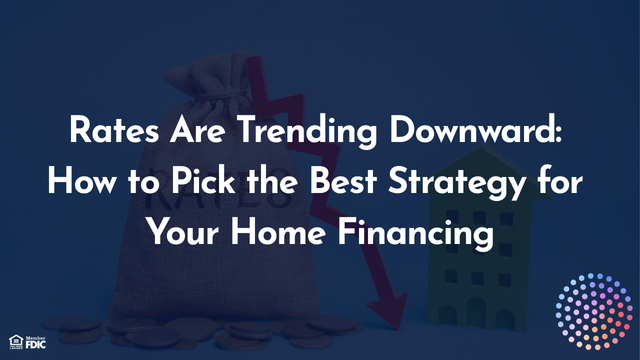Rates Are Trending Downward: How to Pick the Best Strategy for Your Home Financing

As interest rates are trending downward, managing debt doesn’t have to feel overwhelming. For many homeowners, this shift is opening the door to new opportunities to lower monthly payments, consolidate debt, or tap into home equity.
But choosing the best strategy for your needs, whether it’s a cash-out refinance, HELOC, or second mortgage, can be tricky. Each option has its own advantages, and understanding how they work can help you decide which one makes the most sense for your situation.
Weighted Cost Refinancing
If you have multiple loans with different interest rates, it can be difficult to figure out the true cost of your debt. That’s where the concept of weighted average cost of debt comes in. This calculation blends the interest rates from all your loans to give you one overall rate.
Knowing this number makes it easier to evaluate your options. For example, if a refinance offers you a lower overall interest rate than your current mix of debt, you may be able to consolidate into a single loan, reduce your payments, and save money over time. It also helps you determine your break-even point—when the savings outweigh the costs of refinancing.
Second Mortgages
Most homeowners know they can borrow against their home equity, but the question is how. One way is through a second mortgage, which allows you to access funds without changing the terms of your existing mortgage.
There are two main types of second mortgages:
Home Equity Loans:
You receive a lump sum upfront, which you repay in fixed monthly installments at a set interest rate. This option works well if you know exactly how much you need.
Home Equity Lines of Credit (HELOCs):
Similar to a credit card, a HELOC provides ongoing access to funds at a variable rate. During the draw period, you can borrow as needed, making interest-only payments. Once the draw period ends, you’ll begin repaying the balance in monthly installments.
Keep in mind that with both types, you’ll have an additional monthly payment on top of your first mortgage.
Cash-Out Refinances
A cash-out refinance replaces your current mortgage with a new, larger one. The difference between your old loan balance and the new one comes back to you in cash.
This approach allows you to keep just one mortgage payment while unlocking equity for things like home renovations, debt consolidation, or major expenses. Unlike a second mortgage, your old loan is paid off and replaced entirely.
Which Option Is Right for You?
There isn’t a one-size-fits-all answer. The right path depends on your goals, whether that’s lowering your interest rate, consolidating debt, or accessing cash for other needs.
A weighted cost analysis can reveal whether refinancing makes sense. A second mortgage may be the better choice if you want to leave your first mortgage untouched. Or, a cash-out refinance could simplify things by consolidating everything into one loan while giving you extra funds.
The bottom line: the best strategy is the one that helps you pay down debt sooner while keeping your monthly payments manageable. With interest rates easing, now is a good time to revisit your options and see if the numbers work in your favor.
If you’re considering your choices, we’d be glad to walk you through the details and help you find the solution that best fits your financial goals.



